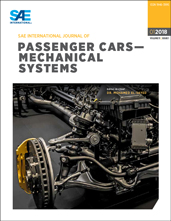This study details an investigation into the accuracy of a recently proposed tire rotation simulation approach, termed the “MRFg” method. Physical experiments and computational fluid dynamics (CFD) simulations were conducted on a sedan-type passenger vehicle with various tire treads and rims. Furthermore, the effects of the wind tunnel geometry on the method’s accuracy was investigated. The experimental data consisted of drag coefficients, front and rear lift coefficients, base and door surface pressures, and wake surveys at various planes around the wheels. Overall, a comprehensive set of validation data was taken. The CFD simulations were transient, and the geometry closely replicated the experimental geometry, including the tires’ deformations. Generally, the MRFg method predicted the effects of the various tread patterns on the drag coefficient to within four counts. Some outliers occurred. The MRFg method predicted some of the flowfield trends and magnitudes very well, but not others. The inclusion of the wind tunnel geometry significantly increased the accuracy of the methodology.
